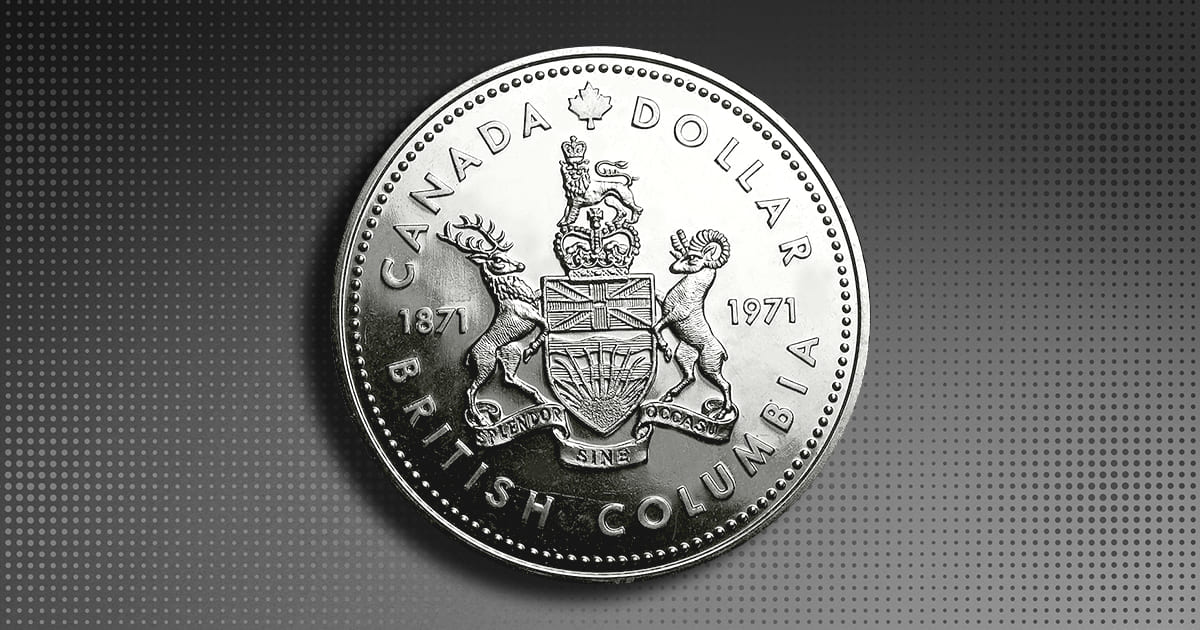
How to Find out if it’s a Silver Dollar
There are 1971 British Columbia Canadian Dollars that contain Silver, and there are 1971 British Columbia Canadian Dollars that do not have Silver content.
The 1971 British Columbia Centennial Commemorative Dollar is made from equal parts Silver and Copper. The Circulating 1971 British Columbia Canadian Circulating Dollar is made from Nickel.
How can you tell the 1971 British Columbia Commemorative Dollar from the Circulating Dollar?
While the obverse is nearly identical, the reverse of these coins is very different.
The circulating release displays British Columbia’s coat of arms with its provincial flower, the dogwood, above the coat.
The Centennial release also has British Columbia’s coat of arms on the reverse but features a wapiti stag and bighorn sheep on either side of the coat of arms. A Royal lion sits atop a large crown over the shield.
There are some other distinctions between these coins, as well. The Centennial release contains .375 oz of Silver and weighs 23.3 grams. The circulating release is composed of Nickel and weighs 15.62 grams.
The final method of telling these two coins apart involves using a magnet. The Silver content of the Centennial release is non-ferrous, while the Nickel content of the circulating release is ferrous and will attract a magnet.





